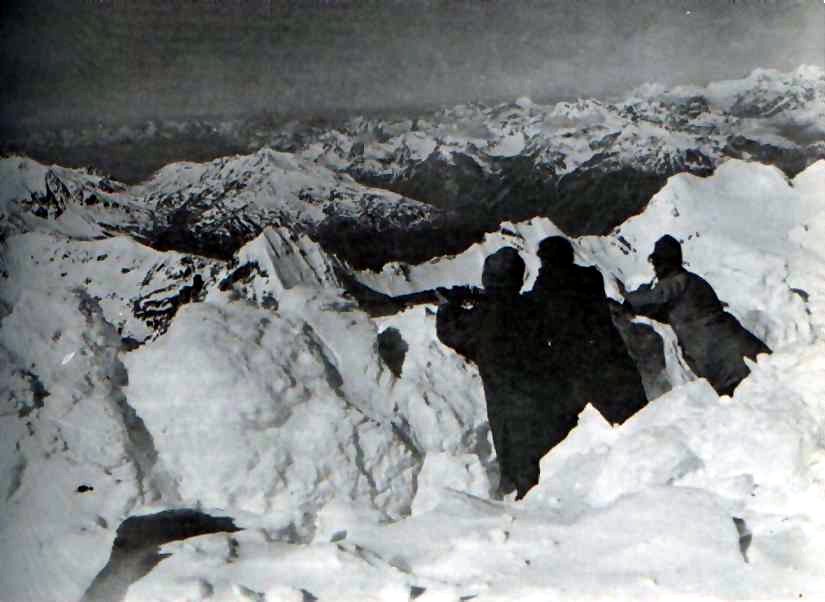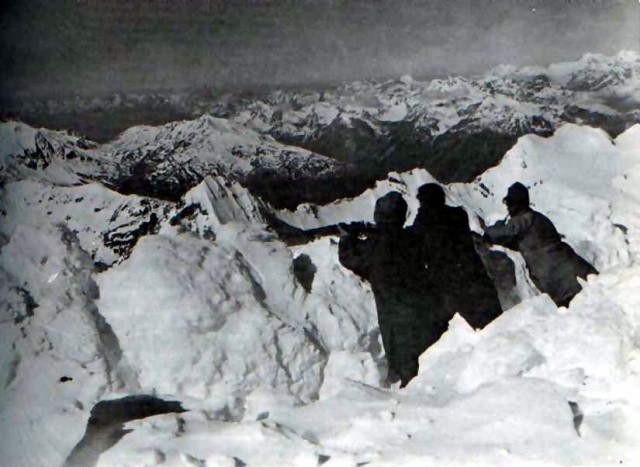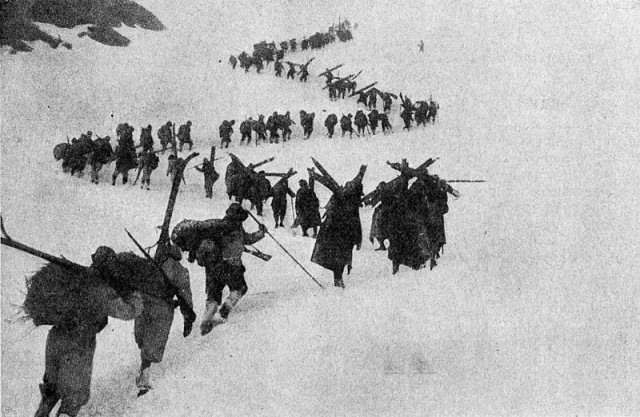As you stand on the 2,788m summit of Lagazuoi, you might think it is the most peaceful place you have ever been to. However, the mountainous border separating Italy from Austria, was one of the most catastrophic battlefields during the Second World War.
The 640hm battlefield stretched from the Swiss border to the Adriatic and where the ski runs are, on both sides used to be fortifications built into the mountains, including numerous tunnels with large amounts of gelignite.
Some of the servicemen, who before the war started worked as mountain guides, were able to perform amazing acts of climbing in order to throw grenades and fire down on the enemy. Not only that the Italians had to endure terrible temperatures but they were also poorly equipped and with very little supplies. In the winter of 1916, for example, the temperature dropped to -40C and the snow was up to 8 metres above the ground level. Due to terrible weather conditions, 270 Austrians lost their lives in a huge slide on Marmolada – 3,342m, on December 13, 1916, also known as White Friday. During that same day, other 10,000 troops were killed in avalanches on that front. What triggered the avalanches is still unknown today, although some say it happened naturally, while according to some reports, it might have been a set up, which included firing shells into a weakened snowpack, which would have buried the other side.
100 years ago, several national groups lived together and traded there in harmony before the war broke out, including Italians, Austrians, Hungarians, Slovenes and Ladins. The Austrians left first, immediately after the war started and found retreat on the surrounding pinnacles.
The small San Cassiano city is probably the best place to start your Grande Guerra tour. You can stay at one of the most comfortable ski hotels in Europe, the famous Rosa Alpina, The Telegraph reports.
You can then ski the war tour in pretty much any direction, although some say that anticlockwise will give you the best view and some of the best runs. From San Cassiano you can go to Piz Sorega and then Monte Cherz and Passo Campolongo, some of the most rewarding and challenging skiing regions.
There are currently 21,000 Ladin-speaking inhabitants in San Cassiano, Corvara and the small towns around. “Rather than just Sudtirolers and Italians we are all now citizens of Europe. It’s right that we should remember the Great War and tell our children about it. Such pointless brutality must never be repeated,” said Matthias, one of the mountain guides.


